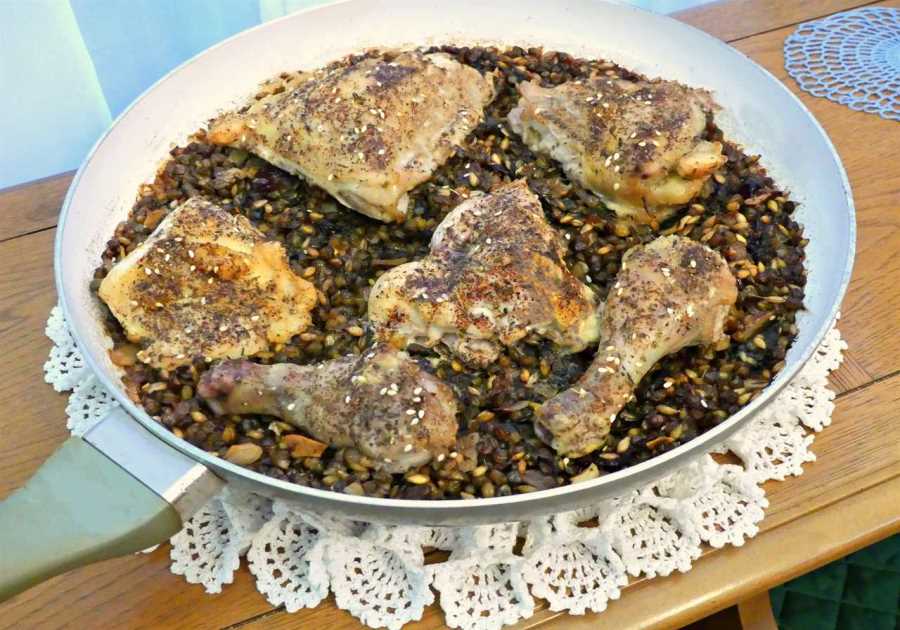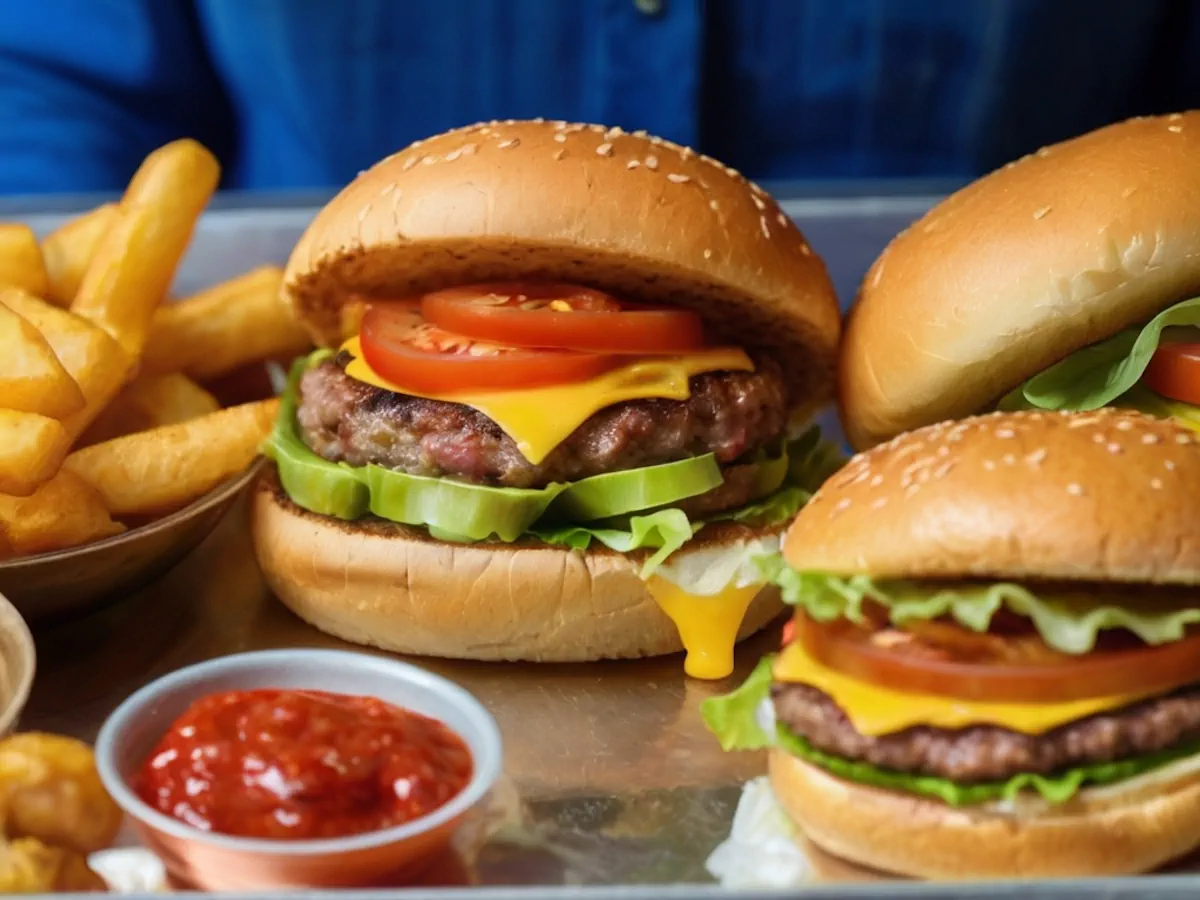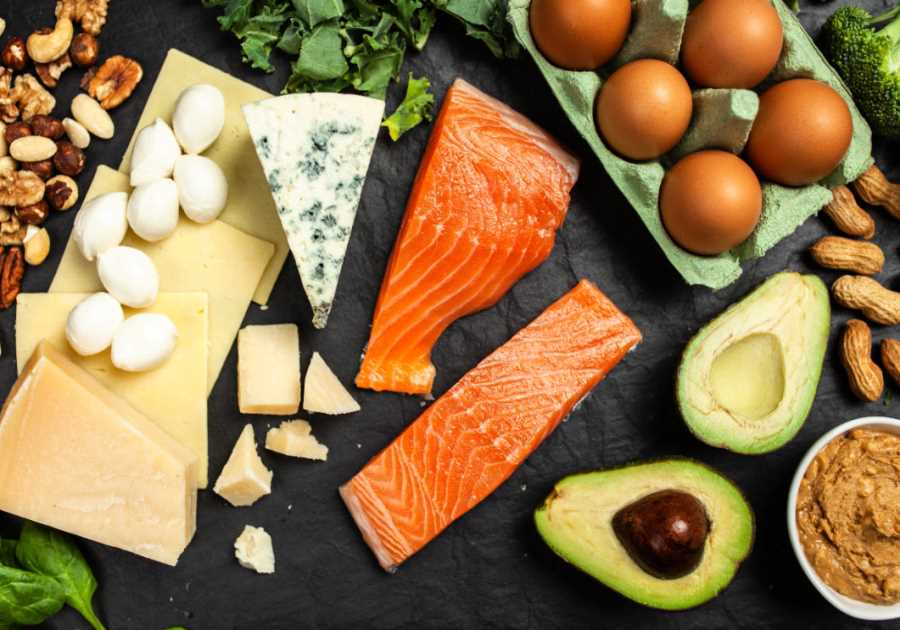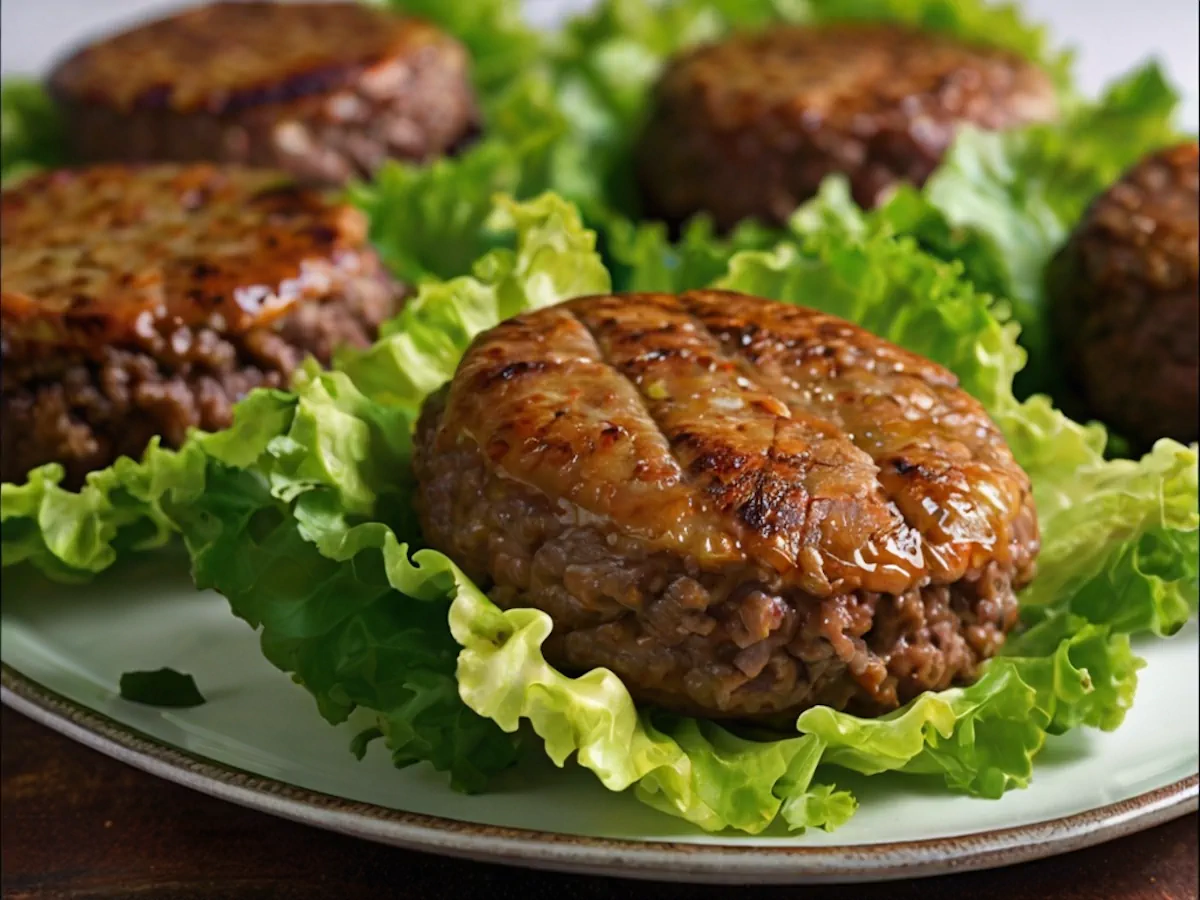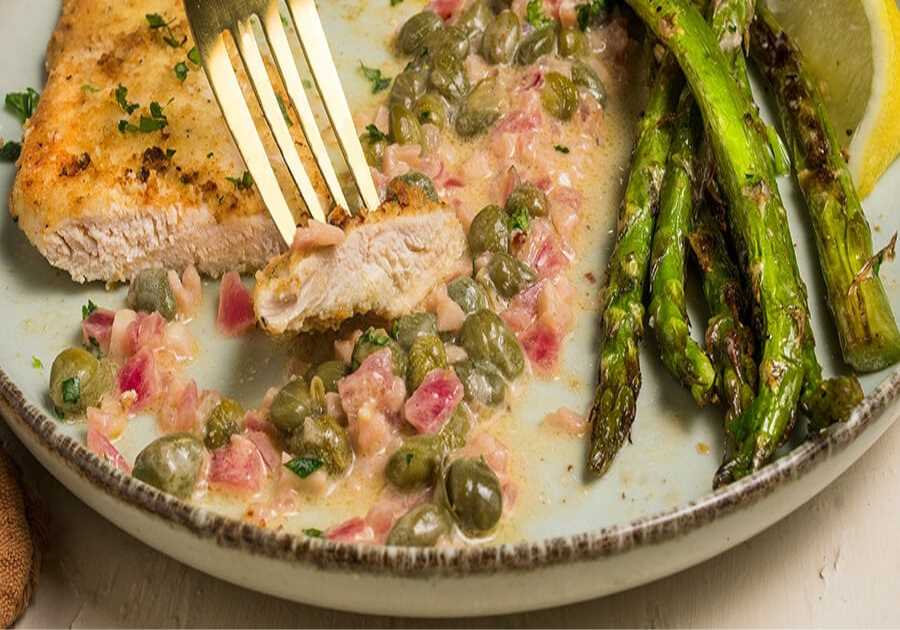
If you're thinking about trying a Paleo diet, or just want to learn more about it, here's a quick look at some foods you should include in your meals. This list is a good starting point, but keep in mind that there are more foods you can eat, and that you'll have to keep an eye on your health to make sure you're eating them in the right quantities.
Fruits and vegetables
Getting plenty of fruits and vegetables on your paleo diet is a great way to boost your intake of healthy nutrients. These foods contain essential vitamins, minerals, and antioxidants, which can help protect against a variety of diseases.
Some studies have shown that eating a diet rich in fruit can lower your risk for developing Type 2 diabetes. Other research indicates that it may be beneficial for joint health.
A strict Paleo diet excludes most dairy, grains, and legumes. It also prohibits refined sweeteners and salt. For those looking for a more lenient plan, you can try a "Paleo" diet that allows certain nuts, seeds, and dark chocolate.
Nuts and seeds
Nuts and seeds are an important part of a healthy diet. They are packed with protein, healthy fats and fibre. These foods are also rich in vitamins and minerals.
Nuts and seeds are great snacks. They contain unsaturated fats, which are beneficial for your heart. However, they should be eaten in moderation. An excess of these fats contributes to heart disease.
A few types of nuts are allowed on a paleo diet, such as walnuts, pecans, and almonds. Walnuts, for instance, are a good source of omega-3 fatty acids. Other nuts that are considered paleo include hazelnuts, peanuts, and cashews.
Legumes, on the other hand, are banned on the Paleo diet. Legumes contain high levels of phytic acid, a compound that interferes with mineral absorption.
Dairy
Whether you're looking to cut out dairy or just want to know what you can eat on the paleo diet, this list will help you get started. It's a great way to stay on track and make sure you're eating right.
The Paleo diet is known for its focus on whole foods and limiting processed foods. This means cutting out grains, candy, soda, and even alcohol. You'll still be able to eat fruits, vegetables, meat, and poultry, but you'll also be avoiding refined sugar, artificial sweeteners, and processed vegetable oils.
While some proponents have gone so far as to embrace full-fat dairy products, others have cited milk protein sensitivities. Luckily, you can still enjoy dairy if you are lactose-intolerant or gluten-free.
Whole grains
Whole grains on paleo diet have been linked to a number of health benefits. For instance, they can reduce your risk of heart disease and diabetes, lower your blood sugar, and help to fight inflammation.
Grains can also provide you with beneficial phytochemicals. These bioactive non-nutrient plant compounds have been shown to have powerful antioxidant properties, which may protect you from cancer and other chronic diseases. Some of the most prominent are alpha and beta carotene, lutein, and zeaxanthin.
However, not all whole grains are created equal. The grains you choose to include on your paleo diet should be easy to digest.
Processed vegetable oils and fats
Processed vegetable oils and fats are a controversial subject. They have often marketed as heart-healthy foods, but they can actually be harmful. It's important to know which ones you should be eating and what to avoid.
If you're thinking of incorporating more oil into your diet, there are plenty of options. Some of the most popular are olive, sesame, peanut, and coconut. You can even find organic versions. But beware of hydrogenated shortening, which is made from seed oils that are highly unstable.
When you're on the paleo diet, you're encouraged to eat healthy fats. These fats are necessary for your brain to function, your arteries to function, and for your skin to be healthy.
Fish and seafood
Fish and seafood are important components of the Paleo diet. They are rich in protein and minerals, as well as antioxidants and heart-healthy Omega-3 fatty acids. This is an important factor because a diet rich in Omega-3s can reduce the risk of heart disease, as well as other chronic illnesses.
Seafood can be eaten raw or cooked. It's important to choose fresh, quality products. If you're purchasing canned or frozen fish, make sure they are BPA-free. That will prevent aluminum from leaching into the fish.
Fish and seafood are also good sources of vitamins and minerals. For example, a 100g serving of clams provides substantial amounts of selenium, manganese, vitamin C, and iron. Salmon is an excellent source of vitamin B6 and vitamin B12.
Although seafood is an important part of the Paleo diet, it's not the only food you should eat. You should also include nuts and seeds in your diet. These are also rich in healthy fats and fiber.
| Protein sources | Fruits | Vegetables | Fats and oils | Nuts and seeds | Beverages |
|---|---|---|---|---|---|
| Grass-fed meat | Berries | Leafy greens | Olive oil | Almonds | Water |
| Wild-caught fish | Melons | Cruciferous veggies | Coconut oil | Walnuts | Herbal tea |
| Shellfish | Stone fruits | Nightshades | Avocado oil | Pistachios | Bone broth |
| Poultry | Citrus fruits | Squash | Ghee | Chia seeds | Coconut water |
| Eggs | Apples | Root vegetables | Lard | Flax seeds | Kombucha |
| Organ meats | Tropical fruits | Asparagus | Tallow | Pumpkin seeds | Nut milk |
Frequently Asked Questions
Can you drink coffee on paleo?
It is possible to drink coffee on a paleo diet, surprising as it may sound. While its origin is not part of the hunter-gatherer lifestyle, coffee is a natural source of antioxidants and nutrients that can be included in a healthy paleo diet.
When coffee is consumed without sweeteners or dairy, it can be a great addition to any meal. This is great news, as caffeine has many health advantages, including increased physical performance and mental alertness, as well reduced risk of certain diseases, such Parkinson's disease and type-2 diabetes.
People on the paleo diet don't have coffee to avoid. If your coffee is unsweetened and made with nut milk (such as almond or cashew milk) instead of dairy products, you can enjoy your daily cup. Try out new flavours from all over the world.
You can enjoy coffee in moderation while sticking to your Primal diet. Enjoy the wonderful taste of freshly brewed coffee.
What happens in Week 1 of the paleo-diet?
The paleo diet does not have to be difficult. The first week is all about getting used to the new diet and lifestyle changes you are about to make.
It is essential to detoxify and prepare your body for the deeper dietary changes that will be required to reap maximum benefits from the paleo diet.
Start by avoiding processed foods and artificial ingredients wherever possible, focus on high-fiber fruits and vegetables, eliminate added sugars from your diet, reduce carbohydrate intake and increase protein intake.
For your body to detox efficiently, ensure that you get adequate water throughout the day. Get restful sleep at night.
It is possible for your body to experience withdrawal symptoms.
Get active by adding in some physical activity to your day, such as walking faster every morning or evening, or signing up for a class like aerobics or yoga. This will help improve digestion and aids in weight loss while helping maintain overall health and well-being.
You can also take this time to consider food intolerances and food sensitivities. To expand your nutrition knowledge, try out new nutritious foods like kale, quinoa or coconut oil.
How quickly will I lose weight on paleo?
It is difficult to predict how quickly you'll lose weight on the Paleo diet without knowing more information about your lifestyle and dietary habits. However, the Paleo-style diet has a high intake of protein, fibre, healthy fat and healthy cholesterol. This allows for greater satisfaction between meals and helps reduce calories. This can make it easier and more enjoyable to reach and keep a healthy body weight. Also, cutting out refined grains and other refined carbohydrates will help with blood glucose control which can aid in weight loss. Regular exercise is essential for any weight loss program. With dedicated adherence to these core principles, the paleo approach can be a powerful tool for achieving lasting changes in your body composition.
You must eat a healthy diet and exercise regularly. It is also important to get adequate sleep and manage stress levels. Insufficient sleep can lead you to a higher appetite and a greater desire for unhealthy foods. Stress can also increase cortisol production which can lead weight gain. Therefore, it is important to ensure that your lifestyle habits align with your weight loss goals.
Can I eat as many fruit as I wish on paleo diet?
Nocturnal munchers may be surprised to hear that they won't find any processed snacks on a paleo diet. It instead focuses on healthy meals and snacks that are made from whole foods like the ones our ancestors ate: fruits and vegetables, nuts and meats.
How much fruit is safe to eat? It all depends on your nutritional needs. While the Paleo diet doesn't limit how much fruit you can consume, you need to remember that a high intake of sugar from fruits can increase the risk for several issues, such as weight gain and blood sugar changes.
We recommend that you consume a maximum of 1-2 cups of fresh or frozen fruit each day. However, no more than two tablespoons should be consumed at once to get added nutrients and fibre. You should choose fiber-rich foods like melons, berries, apples, and pears. They can be eaten raw, in smoothies or as a snack.
Consider adding low-sugar options such as avocados or olives. These are rich in healthy fats and will replace refined starches.
Paleo can be enjoyed with moderation, incorporating other nutrients-dense foods, and even encouraged to indulge in some delicious ripe fruit. Enjoy your food, after all!
What is the 85/15 rule?
Do you feel like your paleo diet isn't quite cutting it? You're not alone. That's why so many people have adopted the 85/15 rule of paleo--the concept that unless you are in a point of fitness or within a few weeks of an important competition, aiming for 85 percent "clean eating" is perfectly acceptable.
This means that even if you indulge in food that isn't strictly paleo, it doesn't mean that your efforts up to now have been lost. Healthy indulgences of 15% are kept in check so that it's balanced and satisfying that you won’t slip from your healthy lifestyle.
It's all too easy to get side-tracked when embarking on any diet accidentally - but this rule is here to help ensure those slip-ups are just that--slips--and not derailment from your fitness journey. It is for everyone, regardless of whether they are just starting their fitness journey or are already at the peak of their physical conditioning.
While the 85/15 rule doesn't necessarily fit into the traditional paleo guidelines (but as long your commitment to eating whole foods throughout the week is kept, and you don't eat processed ingredients, there are many benefits to allowing yourself some flexibility.
Can you eat bananas while on the paleo diet
It can be difficult to think about your nutrition plan. Is it better to stick with the best option or follow the latest trend? Research is always a good idea when you want to eat healthy and make better choices.
One of the most popular styles of eating is the paleo diet. It focuses on eating food that is less processed than those we ate thousands and years ago. While carbs like bread, pasta and other grains are out, fruits and vegetables are still in. But what about bananas?
You can eat bananas while on a paleo diet. They are one the oldest snacks found in nature, and have been a staple in many diets around the world since ancient times. They give you an amazing boost of energy before and after your workout or any time throughout the day.
Bananas are a healthy sweet treat that can satisfy your sweet cravings without adding calories. They also provide added nutrition that is in line with strict paleo guidelines. You should be careful about how often you eat this delicious, naturally sweet fruit.
Enjoy some delicious sliced bananas on Greek yogurt, or topped with shredded coconut as a breakfast option - there's no guilt!
How can the Paleo Diet fit your lifestyle?
Paleo is more than a diet. Paleo is about changing your life, from nutrition and fitness to relationships, work, and mental health. To make it work for you, it takes commitment and dedication.
This is a crucial step in making the transition. It is essential to know which foods are included in the paleo diet as well as what alternatives can be substituted. People find that grocery shopping, meal prep, and recipe research become an integral part of their daily routine. For those following strict paleo guidelines, every detail is important. Therefore, you will need to thoroughly inspect each item before adding it to your shopping cart.
It is important to have a consistent way to eat healthy while also consuming snacks and meals that are prepared in advance for those who live on the go. If you want to maximize your nutritional intake, takeout might not be an option. However, many restaurants offer low-carb and gluten-free options as well as accessorized salads. The best way to enjoy a night on the town is with premeditation and creativity.
It's important not to let it overwhelm you. However, planning will help you stick to the paleo diet and make it easy to incorporate delicious gourmet recipes into your daily life. Prioritize nutrient-dense ingredients over processed items - focusing on quality protein sources like grass-fed beef and seasonal vegetables - allowing room for some Paleo-approved treats here and there, so you stay energized throughout the day!
Statistics
- (3) The paleo diet eliminates dairy because its advocates say many people are lactose intolerant and because eating dairy has been associated with Crohn's disease, among other claims, according to a popular paleo diet website. (everydayhealth.com)
- Carbon Footprints and Diet Quality of 5 Popular Eating Patterns as Reported by US Consumers". (en.wikipedia.org)
- It's up to you to decide to what extent you want to follow those guidelines, but if you follow them 100%, you can be assured that you are eating the best food for your body and greatly investing in your long-term health and well-being. (paleoleap.com)
- Eaton and Konner, for example, wrote a 1988 book, The Paleolithic Prescription with Marjorie Shostak, and it described a diet that is 65% plant-based. (en.wikipedia.org)
- As we learn more about the Paleolithic age, we discover that those who lived during it ate a plant-based diet, with merely an estimated 3%Trusted Source of their diet coming from animal-based foods. (medicalnewstoday.com)
External Links
thepaleodiet.com
pubmed.ncbi.nlm.nih.gov
- PubMed: Scoping review of Paleolithic diet patterns: A definition proposal
- Coffee consumption, side effects and health benefits: A review and update to dietitians and nutritionists – PubMed
hsph.harvard.edu
ncbi.nlm.nih.gov
- A high-phytate diet can reduce the inhibitive effect of phytotate on nonheme iron absorption for women with suboptimal iron reserves - PubMed
- PubMed
How To
What are the best paleo foods?
Since time began, foraging for food has been part of human history. Unprocessed, raw ingredients and unprocessed meals have been shown to be good for our physical and psychological well-being. The paleo diet is gaining popularity.
Paleo is all about making the right food decisions. Unfortunately, there are many choices. If you're looking for nutritious ideas that will nourish your body and keep you satisfied, then read on to discover the best foods allowed under a paleo diet.
Nuts contain protein, healthy oils, and minerals like iron. This makes them great for snacking or adding to recipes such as power bowls or salads. It is the same with seeds such as hemp, sesame or chia. They are also rich in vitamins, minerals, especially omega 3s.
Because of its high content in B vitamins, organic meat is widely accepted by paleo diets. This is due to its ability to provide energy and general health. Eating wild seafood is also highly beneficial as ocean-caught species offer more sustainable nutrients than average farm-raised varieties.
There are many options when it is comes to vegetables and fruits. Dark green leafy vegetables such as kale, spinach, and broccoli are incredibly nutrient-dense. At the same time, oranges, apples, blueberries, and grapes provide key antioxidants to balance out harmful toxins in our environment.
The paleo diet encourages fermented foods such as kimchi and sauerkraut. These foods are rich probiotics that balance the gut microbiome. They aid in digestion and promote a healthy immune response.
It is important to remember that sugar is not permitted on the paleo diet. However, honey and maple syrup can be used in moderation.

